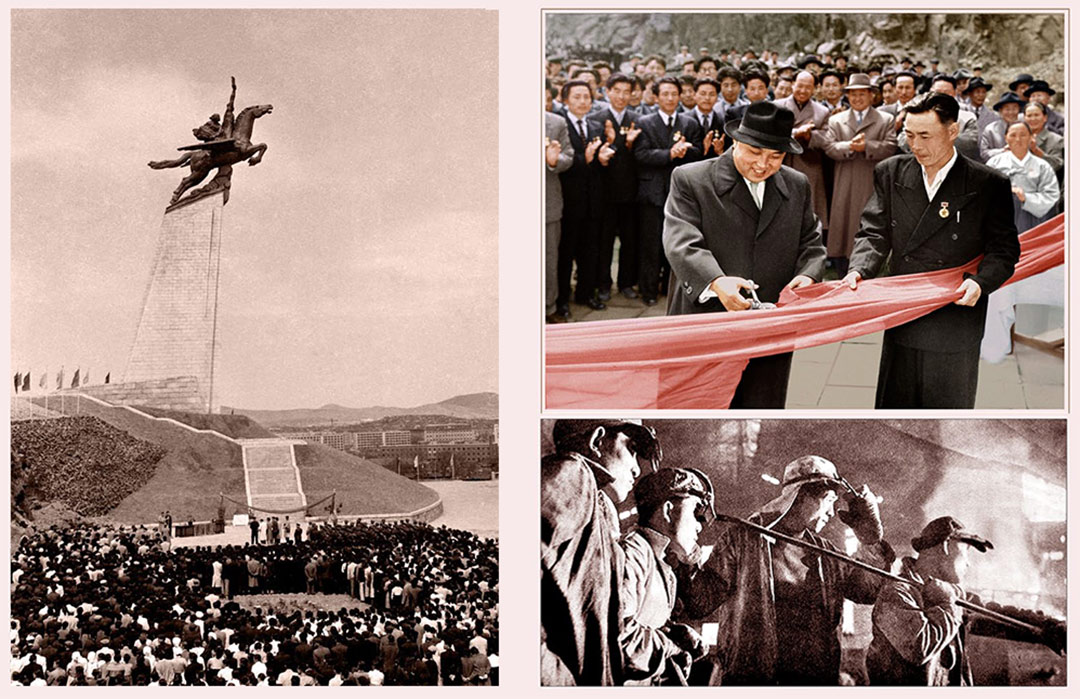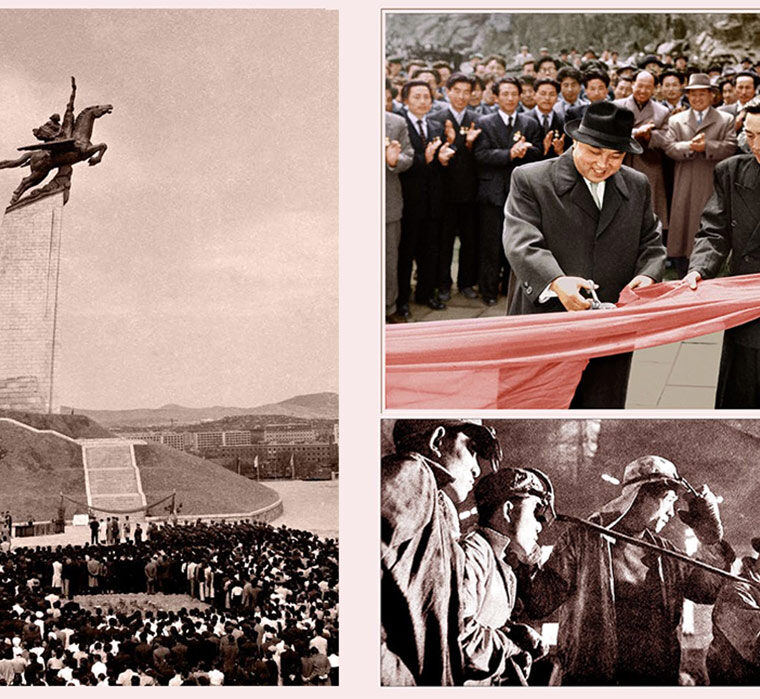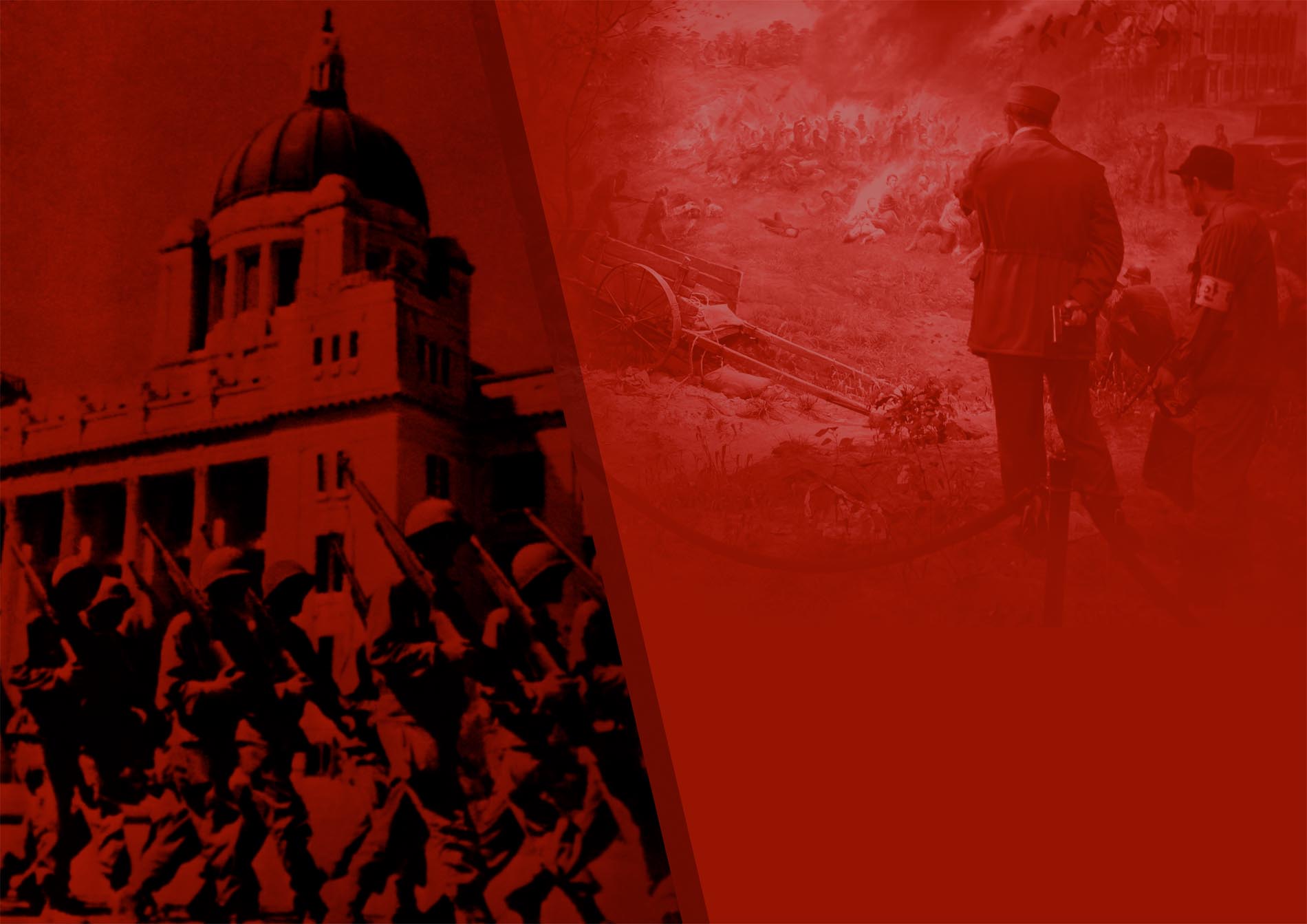
Sixty years have passed since the Chollima Statue was erected on The word Chollima originally referred to the legendary winged stallion that could cover a thousand ri (about 400km) a day, and the term has been used by the Korean ancestors to symbolize a very fast thing.
The latter half of the 1950s was a period full of gigantic leap forward and innovation effected one after another in the Democratic People’s Republic of Korea even in difficult and complicated internal and external situations.
President Kim Il Sung convened a plenary meeting of the Central Committee of the Workers’ Party of Korea in December 1956 to put forward a policy of bringing about a new upswing in socialist economic construction, saying that if the revolutionary zeal of the masses of the people was mobilized the high goals of the national economic plan could certainly be attained.
Under the outstanding and seasoned leadership of the President who relied on the masses with a firm belief in their strength, particularly in times of difficulty, the Korean people worked the miracles unprecedented in the national history.
Workers at the Kangson Steel Plant, cherishing a firm determination to live up to the expectation of the President who placed them in the van of the effort to bring about a revolutionary upsurge, made great innovations in production. By tapping all reserves and maximizing the utilization of production equipment and waging a forceful struggle against passivity, conservatism and fear of technology, they produced 120 000 tons of structural steel using a blooming mill with an annual rated capacity of 60 000 tons.
The torch of the grand Chollima march kindled by the workers in Kangson inspired the working people across the country to effect a great upsurge in all fields of economic construction by displaying the spirit of self-reliance under the revolutionary slogan, “Let us dash forward at the speed of Chollima!” advanced by the President.
The workers at the Kim Chaek Iron and Steel Works produced 270 000 tons of pig iron by means of the equipment with only an annual capacity of 190 000 tons, and the workers at the Hwanghae Iron Works erected a large blast furnace in less than a year.
The industrial production plan for 1957, the first year of the Five-Year Plan, was overfulfilled by 17 per cent, industrial production increased by 44 per cent as against the previous year, and the plan for grain production by 12 per cent.
In the midst of the revolutionary upsurge in all sectors of socialist construction the Chollima Movement started in the DPRK.
The President ensured that the work of laying foundations for socialist industrialization was stepped up by giving spurs to the great revolutionary upsurge of socialist construction.
True to his intention, the workers and technicians in the field of metallurgical industry built a new blast furnace with a capacity of 300 000-400 000 tons in less than a year and supplied iron and steel needed in various fields of national economy.
Those at the machine-building industry made marvellous achievements by displaying the spirit of self-reliance and fortitude and overcoming passivism and conservatism; they manufactured a Chollima tractor in a little more than a month, a Sungni-58 truck in 40 days, and then an 8-metre turning lathe, 3 000-ton press, a Chollima excavator, large-sized Ragwon 1 water pump and a Pulgunbyol 58 bulldozer.
Miracles were wrought in all parts of the country: Machines produced machines, and factories gave birth to factories. More than 13 000 machine tools were produced in addition to the plan within a year.
A revolutionary upsurge was also effected in other branches of the national economy.
Amid a dynamic campaign to introduce irrigation to a million hectares of land, 9 900 odd irrigation facilities were constructed in only six months and 377 000 hectares of crop fields were brought under irrigation.
The Jangjingang Power Station was technically reconstructed, and the Jangjagang and other large, medium and small power stations sprang up in the electric power industry.
The Juche-oriented vinalon industry was founded in the DPRK, and vinalon speed and Pyongyang speed, symbolic of the Chollima speed in socialist construction, were created. The construction workers of Pyongyang built 20 000 flats with the materials and funds for 7 000 flats, and the railway workers laid in only 75 days 80km-long standard-gauge railway lines between Haeju and Hasong, which would have taken three or four years in other times.
Through a nationwide campaign to build at least one locally-run factory in all cities and counties of the country, more than 1 000 local industry factories were built within three to four months, which increased to over 2 000 in a little over a year. As a result, one half of the total consumer goods needed in the country were produced by them.
The great upsurge effected in all spheres of socialist construction rapidly developed the country’s economy. The industrial output value in 1958 grew by 40 per cent over the previous year and by 53 per cent in 1959 as compared to that of 1958.
The Chollima Movement created by President Kim Il Sung became a revolutionary movement of the working millions of the country, sweeping away everything old-fashioned from all spheres of the economy, culture, ideology and morality, and constantly making innovations and accelerating socialist construction.
The world people highly praised the DPRK as Chollima Korea, attributing the Chollima Movement in the country to the outstanding and seasoned leadership of President Kim Il Sung, the genius of creation and construction.
On April 1, 1959, when the Chollima Movement was at its height in the country, the President visited the Moranbong Youth Park under construction and instructed that a monument symbolic of the present era should be erected on Mansu Hill. He also specified that the statue should represent a horse.
On November 17 that year he examined the draft designs of the statue created by sculptures, along with the master plan for the construction of Pyongyang.
He pointed out the shortcomings of drafts and specified the ways for their correction. He continued to say in the following vein: It is more desirable that the statue represents one horse with wings and a man and a woman on horseback. The man had better sit in front holding aloft the “red letter”. If there is only one rider, our descendants might think in the distant future it is the statue dedicated to a certain hero. So it is advisable to seat a man depicting a worker in front and a woman depicting a farmer behind.
While examining in late February 1960 another three draft designs, the President grasped the good points and shortcomings of each design and gave detailed guidance to perfect the design. And in early March he clarified the orientation and detailed ways for creating the statue, saying that an actual-size model should be first produced for visual examination and public opinion.
On June 10 that year he looked around the Moranbong Youth Park, saw the model of the Chollima Statue and instructed that the statue should be made larger.
Energetic guidance of President Kim Il Sung to make the statue a monumental structure in the era of the Workers’ Party of Korea which perfectly reflects the revolutionary aspiration and spirit of the Korean people and remains immaculate even in the distant future inspired all the creators and builders to create the Chollima speed in erecting the statue. Sculptors resolved to complete within 40 days the execution of the statue, which was the biggest equestrian one in the world at that time and would take more than six months to produce from a conventional viewpoint, and completed the work in 36 days. Builders pooled their creative wisdom to speed up its construction.
The unveiling ceremony of the Chollima Statue took place on April 15, 1961, to mark the 49th anniversary of the birth of President Kim Il Sung.
From early on the morning of the auspicious holiday, people thronged to the Mansu Hill and the surrounding area at the foot of Moran Hill to see the statue.
President Kim Il Sung cut the red ribbon in the unveiling ceremony and looked round the Chollima Statue with the creators. He highly praised the creators and had a photograph taken with them.
This is how the Chollima Statue was erected on Mansu Hill, demonstrating the heroic spirit of the Korean people and the mettle of socialist Korea which soars higher and faster towards a bright future in the face of all hardships and obstacles.



